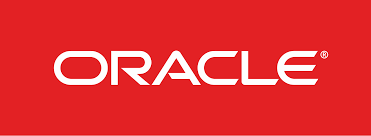
As of today, Oracle commands a market capitalization of $583 billion, and its stock has delivered a 50 percent return over the past year. While the valuation appears elevated, investors should take note that the shares recently surged past the $200 level on strong volume, marking a meaningful breakout. The stock hit a 52‑week high of $216 and now trades around $208, which is near its newly established support zone.
Oracle’s shares currently change hands at ten times last year’s revenue and a price‑to‑earnings ratio of 49, well above both its historical average and the industry median, placing it in the top decile of sector multiples.
Robust Financial Trends A closer examination of Oracle’s recent financial trends reveals a robust improvement in operating performance. Over the past few years, the company has expanded its net profit margin by approximately 300 basis points and achieved profit growth exceeding 20 percent. In response, many Wall Street analysts have raised their earnings forecasts for Oracle.
Valuation and Upside Potential Looking ahead, if Oracle can sustain this performance trajectory over the next three years, its market capitalization could climb by roughly 120 percent, potentially surpassing the trillion‑dollar threshold. The key catalyst for this growth will be continued earnings momentum, driven in part by strategic partnerships such as xAI’s decision to deliver its Grok models via Oracle Cloud Infrastructure’s (OCI) Generative AI service. xAI also plans to leverage Oracle’s AI infrastructure for next‑generation model training.
Most analysts now peg Oracle’s target price north of $225 by 2026. Current shareholders would be well served to monitor the expansion of Oracle’s cloud infrastructure business closely, as it is poised to underpin the company’s next phase of growth.
Additional Growth Catalysts
- Expansion of Oracle Integration Cloud
Enterprises increasingly require seamless data flows across on-premises and multi-cloud environments. Oracle Integration Cloud, which includes API management, data integration, and process automation tools, is well‑placed to grow as customers orchestrate hybrid architectures. Enhanced features such as low-code/no-code integration and unified governance strengthen its competitive positioning. - Autonomous Database Adoption
Oracle’s Autonomous Database, which leverages machine learning to automate routine database management tasks, continues to gain traction among enterprise customers. By reducing administrative overhead and improving performance tuning, the Autonomous Database drives subscription revenue and stickiness. As more organizations migrate mission‑critical workloads off legacy systems, Oracle stands to accelerate its recurring revenue growth. - Cross‑Sell Opportunities
Following its acquisition of Cerner in 2022, Oracle has positioned itself to cross‑sell cloud services to the healthcare provider network. With Cerner’s installed base of thousands of hospitals and clinics, Oracle can introduce its ERP, SCM, and Analytics applications, generating higher average revenue per user (ARPU) and reinforcing its ecosystem. - Edge Computing and 5G Partnerships
Oracle has been forging partnerships with telecom carriers to host edge computing nodes at 5G cell sites. This strategy addresses low-latency requirements for applications such as autonomous vehicles, IoT sensor networks, and augmented reality. As 5G deployments scale, Oracle’s edge‑optimized offerings can capture an expanding revenue pool. - Geographic Expansion in Asia-Pacific
While North America remains Oracle’s largest market, the company has identified the Asia-Pacific region as a key growth area. Investments in local data centers across India, Australia, and Southeast Asia will help Oracle capitalize on the region’s rapid digital transformation, where cloud adoption is expected to grow at double‑digit rates. - Subscription Transition and Renewal Rates
Oracle’s push to convert perpetual license customers to subscription models continues to bear fruit. The migration enhances revenue predictability and improves renewal rates, which have already climbed from the mid-80s percentage range to the low-90s. Strong renewals validate customer satisfaction and reduce churn risks.
Risks and Considerations Despite these tailwinds, investors should be aware of potential headwinds: ongoing competition from hyperscale peers on pricing, integration complexities from large M&A deals, and macroeconomic uncertainty that could slow IT spending. Nevertheless, Oracle’s diversified product portfolio and strong free cash flow generation provide a buffer against volatility.
Conclusion Oracle has delivered impressive returns over the past year, underpinned by significant operational improvements and a strategic pivot toward cloud and AI services. Beyond the already cited growth drivers—xAI partnership and OCI expansion—a host of additional catalysts, from autonomous database adoption to ESG-aligned green cloud initiatives, support a bullish outlook. Assuming Oracle can execute on these initiatives and maintain its high renewal rates, the company’s market capitalization has a clear path to exceed $1 trillion within three years. For investors, keeping a close eye on subscription growth, cross-sell metrics, and regional cloud adoption will be key to assessing ongoing momentum.






